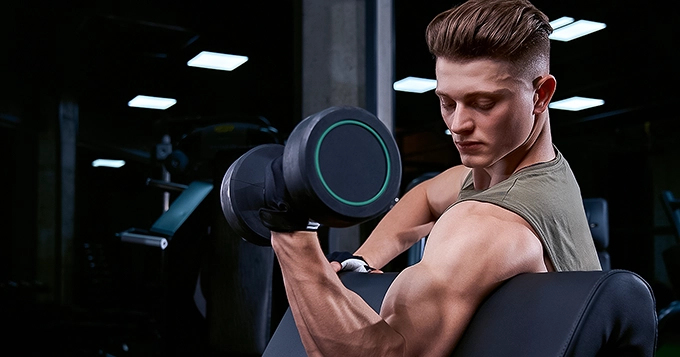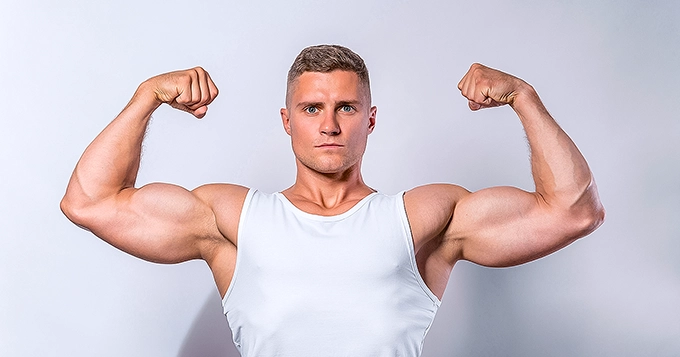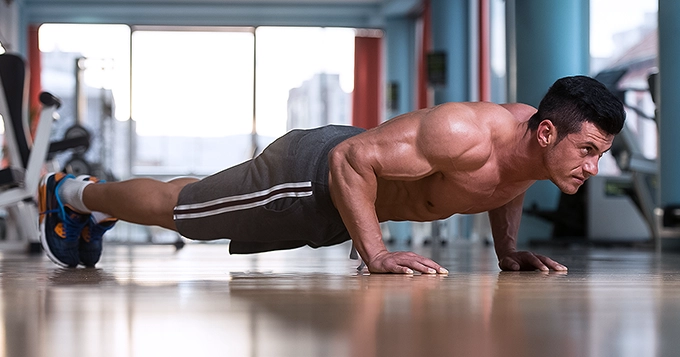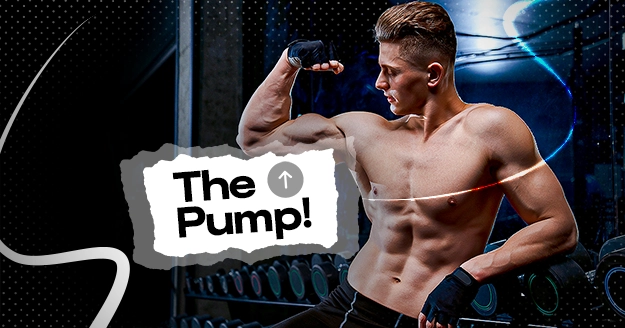
Key Takeaways
- A pump happens when increased blood flow to a muscle makes it temporarily swell and look fuller.
- Feeling the muscle pump helps you better focus on the muscles you’re working during exercise.
- When muscles have low glycogen, they also have less water and won’t pump as well.
Many fitness enthusiasts aim to build optimal muscle strength. There are various workout routines and techniques available, but one particularly effective method in muscle strengthening is called the pump. In this article, we will explain what the pump is, how it works, and why it’s considered a potent tool for enhancing muscle strength.
Understanding the Pump
During resistance training, a phenomenon called the pump, also known as the “vascular pump” or “muscle pump,” takes place. This occurs when there’s a significant increase in blood flow to a specific muscle. This influx of blood brings vital nutrients and oxygen to the muscle, causing it to temporarily expand and appear fuller.
The pump is not just about appearance; it plays a crucial role as a muscle booster – promoting muscle growth and strength by delivering essential resources to the muscle during exercise.
How the Pump Works

During resistance exercises, particularly those with moderate to high repetitions and shorter rest intervals, the energy and nutrient demands of the working muscles increase significantly. In response, the body increases blood flow to meet these heightened requirements. This occurs because the muscles require a steady supply of oxygen and nutrients to sustain the intensity of the exercise.
As blood flows into the working muscles during exercise, the cells within the muscle tissue expand. This cellular expansion creates a sensation of tightness and fullness, which is commonly associated with the pump. This phenomenon occurs due to the increased blood flow to the muscles during exercise.
The increased blood flow during exercise not only delivers more oxygen to the muscle cells but also supplies essential nutrients such as glucose and amino acids. These nutrients support energy production and facilitate the repair and growth of muscle tissue.
This is because the muscles require a steady supply of oxygen, glucose, and amino acids to sustain the intensity of the exercise and promote muscle recovery and development.
Why the Pump is Effective for Muscle Strengthening

1. Metabolic Stress
The muscle pump contributes to metabolic stress, which is a crucial factor in muscle hypertrophy (growth).
Metabolic stress occurs when the muscles are subjected to intense exercise, and it signals the body to adapt to the increased demands by promoting protein synthesis and muscle repair. This adaptation process helps the muscles to grow and become stronger over time.
2. Cellular Signaling
The cellular swelling that happens during the workout pump activates various cellular signaling pathways that are linked to muscle growth.
These pathways help regulate gene expression, promoting the synthesis of new proteins that contribute to muscle strength and size. This process is essential for muscle growth and adaptation to the demands of exercise.
3. Mind-Muscle Connection
Feeling the muscle pump can improve the mind-muscle connection, which is the awareness of the targeted muscles during exercise. This heightened connection can lead to more effective and targeted muscle contractions, optimizing the benefits of each repetition.
By focusing on the muscles being worked, individuals can achieve a more efficient and effective workout, ultimately leading to better results.

How to Boost Your Muscle Pump During Workouts

- Choose Appropriate Exercises: Choose resistance exercises that focus on particular muscle groups and enable you to do more repetitions, such as bicep curls, tricep dips, or leg presses, instead of exercises that work out multiple muscle groups at once, like squats or deadlifts. This will help you build strength in specific areas without getting tired too quickly.
- Controlled repetitions: Make sure to do each repetition slowly and with intention, moving through a full range of motion. This makes the exercise more effective and helps you get a better pump. By focusing on controlled movements, you’ll be able to target your muscles more effectively and get the most out of your workout.
- Short Rest Intervals: To increase the pump, try to keep the rest periods between sets as short as possible. This will help keep your muscles engaged and the blood flowing, which will intensify the pump effect. By minimizing the rest intervals, you’ll maintain a high intensity throughout your workout and get the most out of your efforts.
- Stretch: Instead of just taking a complete break between each set, try actively stretching the target muscle for about 30 seconds. This will increase blood flow to the muscle even more, resulting in an even more intense pump. By actively stretching the muscle, you’re forcing it to work harder and hold more blood, which can lead to a more noticeable and satisfying pump.
-
Get Enough Sleep: If you’re only getting 4-5 hours of sleep each night, your muscles and central nervous system (CNS) won’t have enough time to fully recover. This lack of recovery can negatively impact your strength, endurance, energy levels, muscle contractions, and pump.
To ensure that your body is properly recovered and ready for a good workout, aim to get 7-9 hours of sleep each night, especially on nights before you train. This will help ensure that your muscles and CNS are fully recovered and ready to perform at their best. -
Eat Quality Carbs: To ensure that your muscles are full of glycogen, which is basically stored carbs, make sure you’re consuming enough high-quality carbohydrates every day. Some good sources of carbohydrates include oatmeal, rice, potatoes, quinoa, whole-grain bread, and fruit.
When your muscles are low on glycogen, they’ll also be low on water content and won’t pump maximally.




